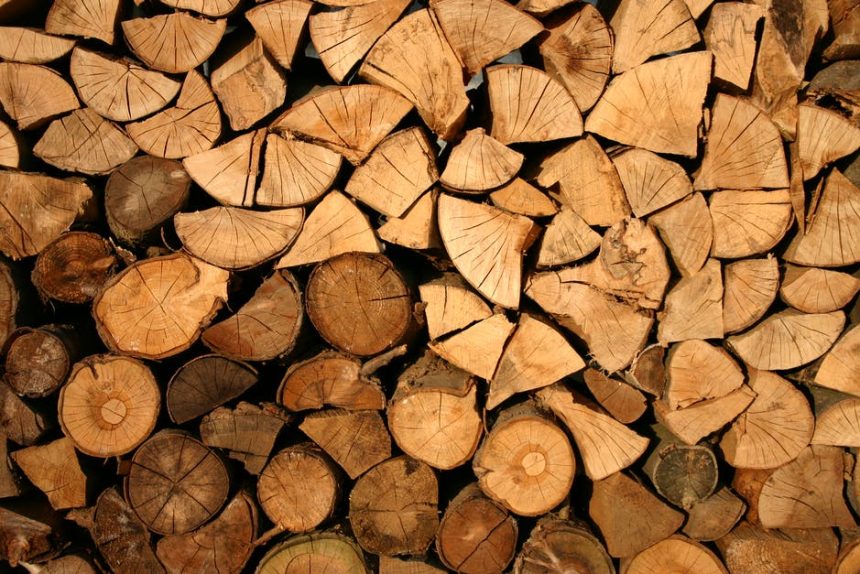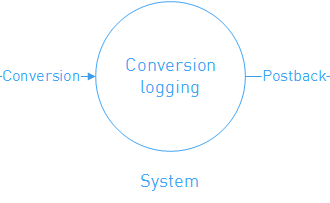A log burner can be a great decorative piece for your home! But they can also come in handy during the cold winter months.
However, if you want your log burner to last a long time, you’ll need to know how to acquire firewood and other maintenance tips! So keep reading this comprehensive guide for owning a log burner!
Types of Fuel Agents
Wood is the most popular fuel agent because it produces the least amount of carbon. However, when getting firewood, make sure you stay away from wet logs as thick could produce harmful chemicals.
You can acquire firewood by going out and cutting it yourself. However, natural wood has moisture inside of it. And as we mentioned above, this can be harmful.
You might be wondering how long it takes for wood logs to dry. Well, on average the drying process for wood takes about 2 years. So while you’re collecting firewood and waiting for it to dry, you’ll need a secure and large drying space.
That’s why most log burner owners chose to buy from a supplier. For example, UK Kiln Dried Logs From Accredited Supplier are the best eco-friendly, dried wood!
Coal vs Logs
House coal is also used for some burners. However, this fuel agent constants a high sulfur content which can pose a huge threat to your health. Your choice of fuel may also depend on what supply you have locally and what the costs are. There are a number of websites that list local fuel suppliers or sell fuel in bulk for delivery.
Overall, the type of fuel agent that you use will be mostly based on the type of log burner that you have. So keep reading to learn which log burner is best for you.
Regulations to Look Out for
Before buying a log burner you should look up your cities regulations. Some towns are smoke controlled which means you’ll need to get your stove approved by Defra.
Defra is the Department for Environment, Food, and Rural Affairs. They oversee many different departments and regulations.
But they are superficially designed to decrease air pollution. Therefore, if you don’t want to buy an approved Defra stove, you can instead burn smokeless fuels and buy a muti-fuel stove instead. However, these types of fuel agents and stoves come with their own issues as well.
Buying a Log Burner
If you haven’t bought a log burner yet, then you might be deciding between a multi-fuel stove or a wood-burning stove. For starters, multi-fuel stoves can burn smokeless fuel, coal, and wood.
However, any coal or smokeless fuels that contain more than 2% sulfur are technically banned by the government. These became banned because they produce a lot of pollution. However, there are substitutes for these burning agents but a multi-fuel stove may not respond well to them.
That is why most people choose to have a wood-burning stove instead. These kinds of log burners are more environmentally friendly because they produce less toxic waste.
Wood-burning only runs on chips, pellets, or logs. So you will need to acquire firewood. However, there are two types of wood-burning stoves. For starters, we have log burners, which are used to heat up smaller areas or a single room. Then we have pellet stoves which are great for heating up an entire house!
Can I Use Charcoal for a Log Burner?
Log burners were exclusively designed for wood logs only! Coal can burn at a faster rate in which a log burner is not accustomed. So by using coal you could severely damage your burner or cause an accident. Overall, it’s best to stick with the designated fuel agent for your burner!
How Long Does a Log Burner Take to Heat up a Home?
A log burner can heat up an entire room within 30 to 40 minutes. However, these times vary depending on the size of the room. And wood pellets can heat up an entire home within one to three hours!
And if you get the right size burner for your home, your home will remain at a constant and normal temperature throughout the burning cycle.
Log Burners vs Wood Pellet Stoves
Wood pellet stoves are most costly when compared to log burners. This kind of stove can only take organic pellets. However, you should make sure of the specific type of pellet that is needed. For example, some pellet stoves only take pellets made from organic materials such as corn.
However, log burners can take regular wood logs. It’s also important to mention that log burners are the most eco-friendly because there is less toxic manufacturing involved in logs when compared to pellets.
And if you are collecting firewood that is 100% ethically sourced, then the toxic emission could be almost 0!
Other Factors to Consider When Buying a Log Burner
When trying to decide on a log burner, you should factor in the heat input and overall size of the unit. Most log burners have a heat input that is measured in kilowatts. These kilowatts range from 3kW to 15kw. You might be asking why this matters.
For starters, if you get heat input that is too high for your home, your house may overheat and will cause you to turn on the AC or open a window. If your heat input is too high, you could turn down the stove temperature. However, this will cause more smoke and tar build-up.
To measure the heat input you need, first, you’ll need to measure the room. Start by measuring the height, width, and length of the room. The layout of the room will also be a contributing factor. For example, is the room an open plan and does it have windows? Overall, these factors will determine how fast your home will heat up.
Once you’ve measured the room size, you can multiply the height, width, and length of the room in meters, then divide this number by 14. The total number will give you an estimate of what kilowatts you need for a stove.
Steps to Using a Wood Burner
If you’ve never owned a log burner before then you might be confused by all of the steps. And not knowing how to properly use a log burner can lead to accidents or damage. Here are the steps you should follow when operating a log burner:
- Prepare your log burner by making sure the fire has an air supply as some burners may not come with an air measurement
- Properly place a good amount of dry wood and firefighters on the fire bed
- You should give the kindling the right amount of time to catch fire and then let it burn
- Use a log guard to keep the fuel inside of the burner and have a safe distance between the glass and fuel
- You should leave the door a little open to help the chimney work properly
- But if you notice your kindle isn’t catching fire or burning properly then close the door all the way
- Slowly start incorporating split dry wood but not any full logs as this could cause the fire to be smothered
- Once the fire is burning you can slow down the airflow to make for a longer and more efficient fire
Make sure you follow these steps methodically as they will improve your fire and make for a warmer home! If you have any specific questions about your log burner, check your owner manual for detailed instructions.
Safety protocols for Log Burners
Log burners are safe when used correctly! But there are a lot of user errors that can occur and cause an accident. Here are some safety tips to follow when operating a log burner:
- When adding wood or coal make sure you’re wearing heat protectant gloves to avoid any injures
- Have a fireguard around your burner to prevent any injuries to pets or small children
- Have a fire extinguisher handy in the case of an accident
- The burner should not be placed on carpet or hardwood floors directly instead have a fire-resistant base
- Avoid stacking logs and other flammable material too close to the burner
- Have your boiler delivered and installed by a professional
- Clean the chimney once during the heating season and then again after the heating season
Follow these tips closely as they can prevent a house fire and property damage. Proper cleaning and maintenance are also important when owning a log burner!
How Many House Fires Occur Because of Log Burners?
Although the number isn’t yet known, we do know that log burners are not the main cause of house fires. In fact, cooking accidents, Christmas trees, and cigarettes are all some of the main causes of house fires!
Overall, all you need to do is closely follow the instructions that are given to you, and use the correct materials! Nevertheless, accidents do happen especially if you’re not keeping up with the maintenance and cleaning of your log burner.
Maintenance and Cleaning
As stated above, it’s important that you clean your chimney once during the heating season and then again afterward. However, there are other maintenance and cleaning tips you should follow.
Overall, you’ll need to clean your exterior, glass door, and interior. And all of these compartments require different cleaning techniques and tools. So make sure you have a small brush, newspaper, an ash shovel, ash container, and a spray bottle!
Cleaning the Interior
First, put your gloves on and begin moving the ash into the container with the small shovel. Make sure the ash container is made from metal and not plastic as this could cause your container to burn.
Once you’ve gathered all of the ashes, place the ash container outside. Make sure the container is away from my trees, bushes, and other flammable material.
Cleaning the Exterior
Use a soft brush to scrape off the build-up. This may take some time especially if you haven’t cleaned your log burner in a while. So try doing this at least once a week to avoid excessive build-up. You can also use a dry cloth to polish and clean the exterior. However, make sure the cloth is not wet as this causes rust.
Cleaning the Glass Door
Cleaning your glass door is fairly simple. And you don’t need to buy an expensive window cleaner. All you will need is a piece of charcoal! And you probably already have some inside of your burner.
You see, when you burn wood, it eventually becomes charcoal. However, the charcoal will eventually turn into dust. So you have to collect your charcoal before this happens. Make sure you’re wearing heat protectant gloves when extracting this material. The charcoal might be a little hot so place it on a secure table so it can cool down!
Once the charcoal has completely cooled down, dampen it with water, and rub it on the glass. The charcoal acts as an exfoliant and cleanser which can remove all the dark spots on your glass window!
Are Log Burners Going to Become Illegal Soon?
There will be a ban on burners that use old technology and toxic fuel agents’. But if you own and operate a clean burner that is approved by Defra then you should not worry about bans. Also using dry wood that has been ethically sourced, reduces the percentage of pollution.
Not to mention, most modern log burners use clean technology to burn and dispose of air! Overall, if you use clean burners and clean fuel agents you will be safe from any regulations!
Buy a Log Burner Today
Overall, a log burner can be a great heating source for your home. So say goodbye to cold winter nights, and hello to a toasty home!
If you enjoyed this article, don’t forget to check out the rest of our website for the latest news!















